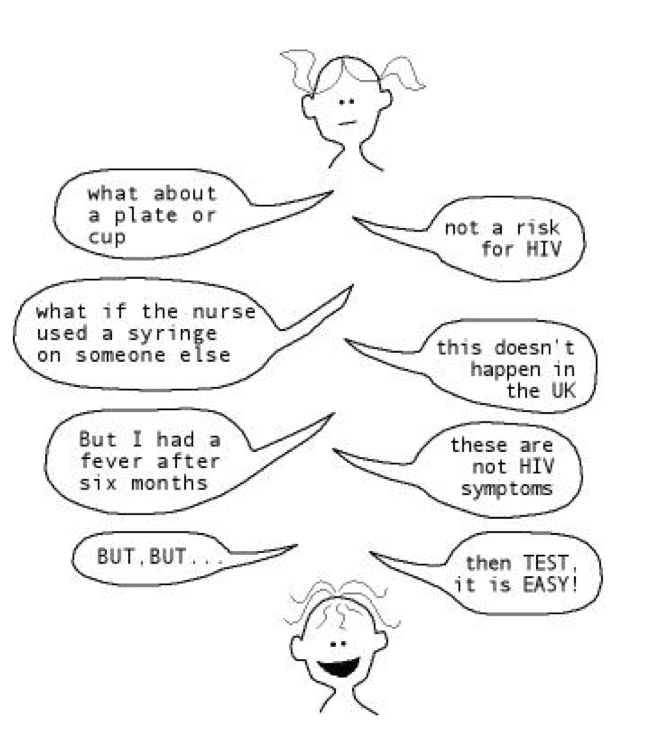Ways that HIV is not transmitted
 HIV is not transmitted by day-to-day activities or by contact with objects, food or clothes.
HIV is not transmitted by day-to-day activities or by contact with objects, food or clothes.
The following list includes just a few examples of questions we get from people worried about catching HIV.
Most of these questions come from a combination of fear and ignorance. They come from a lack of confidence in understanding HIV transmission.
You can NOT catch HIV from:
- Eating any food, cooked or uncooked, with blood on it.
- From a sterile needle at a clinic or other health centre.
- From a human bite.
- From an insect bite including a mosquito bite.
- From an animal.
- From living in the same house as someone who is HIV positive.
- From a sewing needle if you stab your finger.
- From blood on a bus seat that went through your underwear.
- Cleaning nail clippers.
- Using a knife/fork/spoon/cup/plate that an HIV positive person may have used.
- Getting sexual fluid on skin.
- Getting sexual fluid on a cut that has already healed over. A cut has to be open to be a risk of HIV.
The above are all real examples sent as questions to i-Base. They show that ignorance about HIV is still common.
Effective barriers against HIV
There are many effective barriers that prevent infection.
Skin: Skin is an excellent barrier against HIV, unless there is an open cut or open wound. Infectious fluid on skin is NOT a route for infection.
Mucous membranes in the mouth, throat and stomach: These membranes are good barriers against HIV infection, so long as there are not cuts, ulcers or sores.
Saliva: Saliva contains proteins and a low salt content that actively reduce its infectiousness. Even when HIV is detected there is too little to cause infection. HIV is not transmitted by kissing including deep kissing. Spit cannot transmit HIV.
Air: HIV is not transmitted by air.
Latex and rubber: Condoms prevent infection from HIV and many other sexually transmitted infections.
Many sexual situations have no risk of transmitting HIV.
These include masturbation (by yourself or with a partner), kissing and deep kissing, receiving oral sex and vaginal or anal sex using a condom correctly.
Last updated: 1 June 2021.
